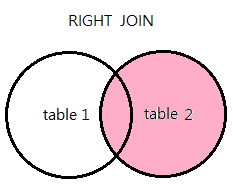SQL note
Intro
- SQL = Structured Query Language
- SQL lets you access and manipulate databases
Syntax
SQL keywords are NOT case sensitive : select is the same as SELECT.
-- 抓出所有資料
SELECT * FROM table_name;
Some of The Most Important SQL Commands :
| Commands | Discription |
|---|---|
| SELECT | extracts data from a database |
| UPDATE | updates data in a database |
| DELETE | deletes data from a database |
| INSERT INTO | inserts new data into a database |
| CREATE DATABASE | creates a new database |
| ALTER DATABASE | modifies a database |
| CREATE TABLE | creates a new table |
| ALTER TABLE | modifies a table |
| DROP TABLE | deletes a table |
| CREATE INDEX | creates an index (search key) |
| DROP INDEX | deletes an index |
SELECT
-- 抓出相對應column的資料
SELECT column1, column2, ...
FROM table_name
-- 只抓出不同的資料
SELECT DISTINCT column1, column2, ...
FROM table_name
WHERE
The WHERE clause is used to extract only those records that fulfill a specified condition.
SELECT column1, column2, ...
FROM table_name
WHERE condition;
Operators in The WHERE Clause :
| Operator | Description |
|---|---|
| = | Equal |
| > | Greater than |
| < | Less than |
| >= | Greater than or equal |
| <= | Less then or equal |
| <> | Not equal. (In some version of SQL this operator may be written as !=) |
| BETWEEN | Between a certain range |
| LIKE | Search for a pattern |
| IN | To specify multiple possible values for a column |
AND, OR and NOT Operators
/*
The WHERE clause can be combined with AND, OR and NOT operators.
*/
SELECT column1, solumn2, ...
FROM table_name
WHERE condition1 AND condition2 OR NOT condition3 ...;
ORDER BY Keyword
The ORDER BY keyword is used to sort the result-set in ascending(default) or descending order.
SELECT column1, column2, ...
FROM table_name
ORDER BY column1, column2, ... ASC|DESC
/*
多重排序,依 **ORDER BY** 順序做更詳細的排序。
如下:依column1遞增排序完,根據column1相同值再對column2做遞減排序。
*/
SELECT * FROM table_name
ORDER BY column1 ASC, column2 DESC;
INSERT INTO
The INSERT INTO statement is used to insert new records in a table.
-- Method 1, value 存到相對應的 column
INSERT INTO table_name (column1, column2, column3, ...)
VALUES (value1, value2, value3, ...);
-- Method 2, value 存到 table 相對應順序的 column
INSERT INTO table_name
VALUES (value1, value2, value3, ...);
NULL Values
A field with a NULL value is a field with no value.
It is not possible to test for NULL values with comparison operators, such as =, <, or <>.
We will have to use the IS NULL and IS NOT NULL operators instead.
-- 從 table_name 中取出 column_name 「是空」的資料
SELECT column_name FROM table_name
WHERE column_name IS NULL
-- 從 table_name 中取出 column_name 「不是」空的資料
SELECT column_name FROM table_name
WHERE column_name IS NOT NULL
Update
The UPDATE statement is used to modify the existing records in a table.
UPDATE table_name
SET column1 = value1, column2 = value2, ...
WHERE condition;
Caution : 此處的condition很重要,若忽略它,整個table的資料都會被改掉!!
Caution : 此處的condition很重要,若忽略它,整個table的資料都會被改掉!!
Caution : 此處的condition很重要,若忽略它,整個table的資料都會被改掉!!
DELETE
The DELETE statement is used to delete existing records in a table.
DELETE FROM table_name WHERE condition;
Caution : 此處的condition很重要,若忽略它,整個table的資料都會被刪掉!!
Caution : 此處的condition很重要,若忽略它,整個table的資料都會被刪掉!!
Caution : 此處的condition很重要,若忽略它,整個table的資料都會被刪掉!!
-- 相當於如下,
DELETE FROM table_name
TOP, LIMIT or ROWNUM clause
The SELECT TOP clause is useful on large tables with thousands of records.
Returning a large number of records can impact on performance.
Note : Not all database systems support the SELECT TOP clause. MySQL supports the LIMIT clause to select a limited number of records, while Oracle uses ROWNUM.
-- SQL sServer / MS Access Syntax :
SELECT TOP number|percent column_name(s)
FROM table_name
WHERE condition;
--MySQL Syntax :
SELECT column_name(s)
FROM table_name
WHERE condition
LIMIT number;
--Oracle Syntax :
SELECT column_name(s)
FROM table_name
WHERE ROWNUM <= number;
-- 從 table_name 中抓取前三筆資料的三個範例
SELECT TOP 3 * FROM table_name
SELECT * FROM table_name
LIMIT 3;
SELECT * FROM table_name
WHERE ROWNUM <= 3;
-- 從 table_name 中抓取前 50% 筆資料
SELECT TOP 50 PERCENT * FROM table_name
-- 也可從條件中取出前三筆資料的三個範例
SELECT TOP 3 * FROM table_name
WHERE condition;
SELECT * FROM table_name
WHERE condition
LIMIT 3;
SELECT * FROM table_name
WHERE condition AND ROWNUM <= 3;
MIN() and MAX() functions
The MIN() function returns the smallest value of the selected column.
The MAX() function returns the largest value of the selected column.
SELECT MIN(column_name)
FROM table_name
WHERE condition;
SELECT MAX(column_name)
FROM table_name
WHERE condition;
COUNT(), AVG() and SUM() functions
The COUNT() function returns the number of rows that matches a specified criteria.
The AVG() function returns the average value of a numeric column.
The SUM() function returns the total sum of a numeric column.
SELECT COUNT(column_name)
FROM table_name
WHERE condition;
SELECT AVG(column_name)
FROM table_name
WHERE condition;
SELECT SUM(column_name)
FROM table_name
WHERE condition;
LIKE Operator
The LIKE operator is used in a WHERE clause to search for a specified pattern in a column.
There are two wildcards often used in conjunction with the LIKE operator :
- % - The percent sign represents zero, one, or multiple characters
- _ - The underscore represents a single character
SELECT column1, column2, ...
FROM table_name
WHERE columnN LIKE pattern;
| LIKE Operator | Description |
|---|---|
| WHERE Coulumn_name LIKE ‘a%’ | Finds any values that start with “a” |
| WHERE Coulumn_name LIKE ‘%a’ | Finds any values that end with “a” |
| WHERE Coulumn_name LIKE ‘%or%’ | Finds any values that have “or” in any position |
| WHERE Coulumn_name LIKE ‘_r%’ | Finds any values that have “r” in the second position |
| WHERE Coulumn_name LIKE ‘a_%_%’ | Finds any values that start with “a” and are at least 3 characters in length |
| WHERE Coulumn_name LIKE ‘a%o’ | Finds any values that start with “a” and ends with “o” |
Wildcards
A wildcard character is used to substitute one or more characters in a string.
Wildcard characters are used with the SQL LIKE operator. The LIKE operator is used in a WHERE clause to search for a specified pattern in a column.
- Wildcard Characters in MS Access
| Symbol | Description | Example |
|---|---|---|
| * | Represents zero or more characters | bl* finds bl, black, blue, and blob |
| ? | Represents a single character | h?t finds hot, hat, and hit |
| [] | Represents any single character within the brackets | h[oa]t finds hot and hat, but not hit |
| ! | Represents any character not in the brackets | h[!oa]t finds hit, but not hot and hat |
| - | Represents a range of characters | c[a-b]t finds cat and cbt |
| # | Represents any single numeric character | 2#5 finds 205, 215, 225, 235, 245, 255, 265, 275, 285, and 295 |
- Wildcard Characters in SQL Server
| Symbol | Description | Example |
|---|---|---|
| % | Represents zero or more characters | bl% finds bl, black, blue, and blob |
| _ | Represents a single character | h_t finds hot, hat, and hit |
| [] | Represents any single character within the brackets | h[oa]t finds hot and hat, but not hit |
| ^ | Represents any character not in the brackets | h[^oa]t finds hit, but not hot and hat |
| - | Represents a range of characters | c[a-b]t finds cat and cbt |
IN Operator
The IN operator is a shorthand for multiple OR conditions.
-- Method 1
SELECT column_name(s)
FROM table_name
WHERE column_name IN (value1, value2, ...);
--Method 2
SELECT column_name(s)
FROM table_name
WHERE column_name IN (SELECT STATEMENT);
-- selects all customers that are from the same countries as the suppliers
SELECT * FROM Customers
WHERE Country IN (SELECT Country FROM Suppliers);
BETWEEN Operator
The BETWEEN operator selects values within a given range. The values can be numbers, text, or dates.
The BETWEEN operator is inclusive: begin and end values are included.
SELECT column_name(s)
FROM table_name
WHERE column_name BETWEEN value1 AND value2;
-- selects all products with a price BETWEEN 10 and 20
SELECT * FROM Products
WHERE Price BETWEEN 10 AND 20;
-- display the products outside the range of the previous example, use NOT BETWEEN:
SELECT * FROM Products
WHERE Price NOT BETWEEN 10 AND 20;
-- selects all products with a price BETWEEN 10 and 20. In addition; do not show products with a CategoryID of 1,2, or 3:
SELECT * FROM Products
WHERE (Price BETWEEN 10 AND 20)
AND NOT CategoryID IN (1, 2, 3);
-- selects all products with a ProductName BETWEEN Carnarvon Tigers and Mozzarella di Giovanni:
SELECT * FROM Products
WHERE ProductName BETWEEN 'Carnarvon Tigers' AND 'Mozzarella di Giovanni'
ORDER BY ProductName
-- selects all orders with an OrderDate BETWEEN '01-July-1996' and '31-July-1996':
SELECT * FROM Orders
WHERE OrderDate BETWEEN #01/07/1996# AND #31/07/1996#;
SELECT * FROM Orders
WHERE OrderDate BETWEEN '1996-07-01' AND '1996-07-31';
Aliases
SQL aliases are used to give a table, or a column in a table, a temporary name.
Aliases are often used to make column names more readable.
An alias only exists for the duration of the query.
SELECT column_name AS alias_name
FROM table_name;
SELECT column_name(s)
FROM table_name AS alias_name
-- creates two aliases, one for the CustomerID column and one for the CustomerName column:
SELECT CustomerID AS ID, CustomerName AS Customers
FROM Customers;
-- It requires double quotation marks or square brackets if the alias name contains spaces:
SELECT CustomerName AS Customer, ContactName AS [Contact Person]
FROM Customers;
-- creates an alias named "Address" that combine four columns (Address, PostalCode, City and Country):
-- SQL
SELECT CustomerName, Address + ', ' + PostalCode + ' ' + City + ', ' + Country AS Address
FROM Customers;
-- MySQL
SELECT CustomerName, CONCAT(Address,', ',PostalCode,', ',City,', ',Country) AS Address
FROM Customers;
-- Alias for Tables
SELECT o.OrderID, o.OrderDate, c.CustomerName
FROM Customers AS c, Orders AS o
WHERE c.CustomerName="Around the Horn" AND c.CustomerID=o.CustomerID;
JOIN
A JOIN clause is used to combine rows from two or more tables, based on a related column between them.
Different Types of SQL JOINs :
- INNER JOIN

SELECT column_name(s) FROM table1 INNER JOIN table2 ON table1.column_name = table2.column_name; - LEFT JOIN

SELECT column_name(s) FROM table1 LEFT JOIN table2 ON table1.column_name = table2.column_name; - RIGHT JOIN

SELECT column_name(s) FROM table1 RIGHT JOIN table2 ON table1.column_name = table2.column_name; - FULL OUTER JOIN

SELECT column_name(s) FROM table1 FULL OUTER JOIN table2 ON table1.column_name = table2.column_name; - Self JOIN
-- matches customers that are from the same city: SELECT A.CustomerName AS CustomerName1, B.CustomerName AS CustomerName2, A.City FROM Customers A, Customers B WHERE A.CustomerID <> B.CustomerID AND A.City = B.City ORDER BY A.City
UNION Operator
The UNION operator is used to combine the result-set of two or more SELECT statements.
- Each SELECT statement within UNION must have the same number of columns
- The columns must also have similar data types
- The columns in each SELECT statement must also be in the same order
-- The UNION operator selects only distinct values by defaul :
SELECT column_name(s) FROM table1
UNION
SELECT column_name(s) FROM table2
-- To allow duplicate values, use UNION ALL :
SELECT column_name(s) FROM table1
UNION ALL
SELECT column_name(s) FROM table2;